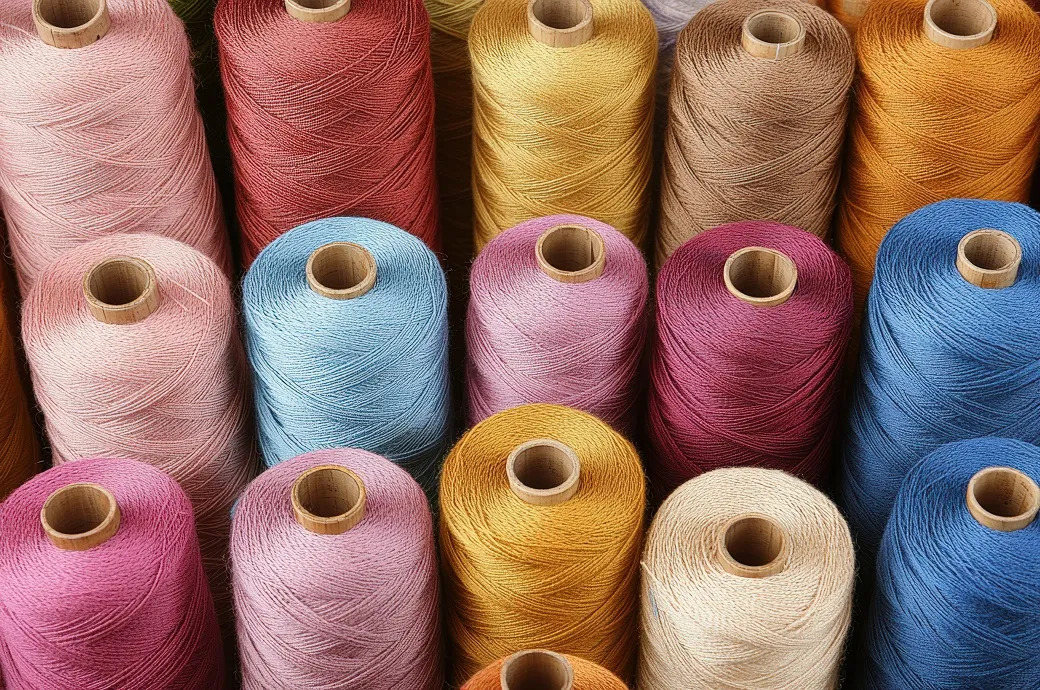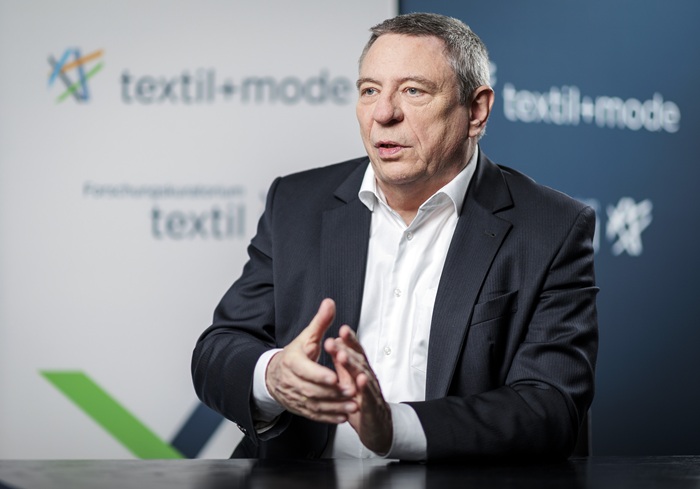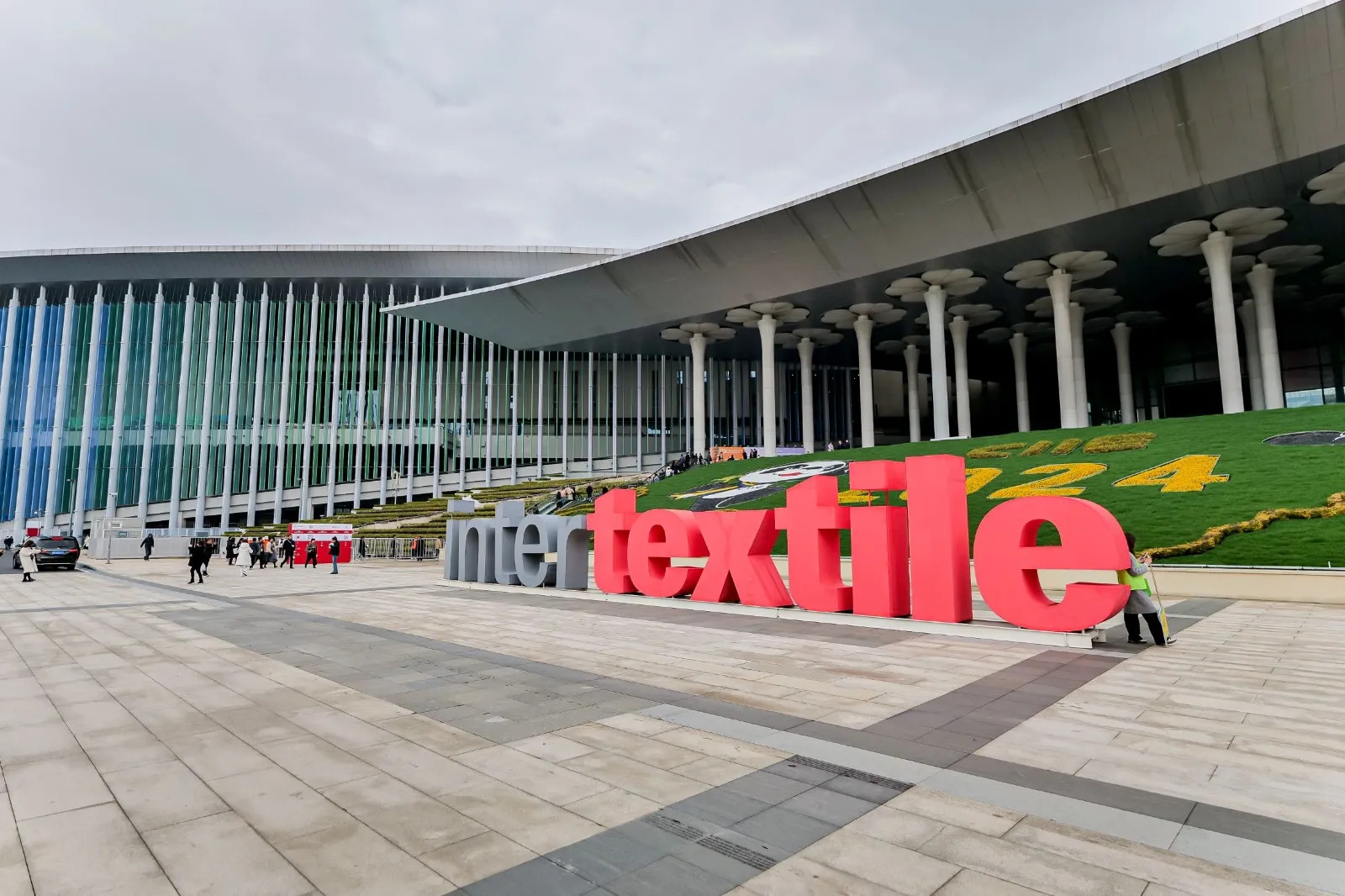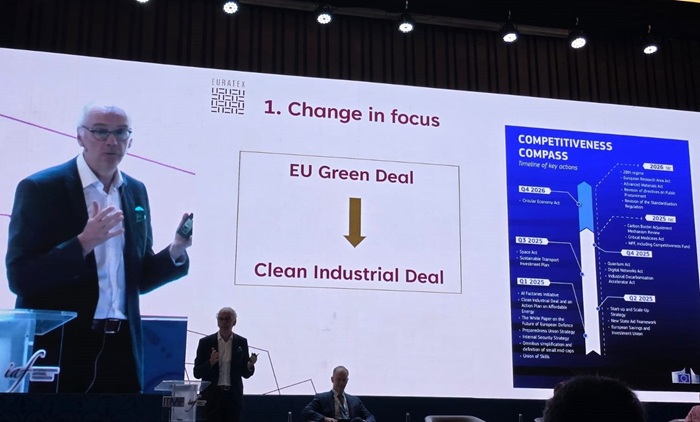FW
In continuation of the last month’s positive performance, Pakistan’s external trade showed improvement in November 2016 with exports amounting to US$1.76 billion, says an analysis. This showed a reversal from the consistent monthly downward trend seen this year. The textiles and clothing sector, that constitutes more than 60 per cent of the country’s exports also picked up its pace, rising 9.7 per cent Y-o-Y to US$1.05 billion in the month under review.
This growth was broad-based recovery in both low value (+15.6 per cent Y-o-Y) and value-added segments (+7.6 per cent Y-o-Y). However, on a cumulative basis, 5MFY17 textile exports were still lower at US$5.13 billion.
Going forward, analysts expect textile exports to largely remain under pressure due to one, demand side bottlenecks with weak Chinese demand outlook and economic slowdown in the EU following Brexit, two, lower currency competitiveness amid sharp depreciation in regional currencies and three, low commodity prices.
Having talked about that, the sector anxiously awaits the yet to be announced incentive package estimated at around Rs75 billion by the Government of Pakistan (GoP). This package is aimed at enhancing export competitiveness over regional countries and providing relief to the textile sector.
Performance of the value added sector posted growth with Knitwear, Readymade garments and Bed wear registering double digit growth. Moreover, the low valued added segment depicted a commendable recovery after a consistent decline this year, where the exports of cotton yarn increased by 42.1 per cent Y-o-Y/10.3 per cent M-o-M. However, on a cumulative basis, textile exports after recovery still remained unimpressive with 5MFY17 exports recording a decline of 2.0 per cent Y-o-Y.
Overall textile exports from Pakistan continued to present a dismal picture for another year. By this, the industry has been rendered unviable by the high cost of doing business as a consequence of which textile exports fell further by $600 million, said All Pakistan Textile Mills Association (Aptma) chairman, Aamir Fayyaz.
Total exports of the country are understood to have fallen by $1.2 billion in the current year as per the present trend. Foreign exchange receipts on trade account are important to be revived and given a new impetus to arrest the country’s trade deficit that has swelled to an alarming and unmanageable level of $28.3 billion, the Aptma official added.
He further said that owing to unrealistically high energy costs, the textile industry continued to face the handicap of being 10 per cent more expensive against international competitors. He also claimed that since 2013, the price of energy has been higher than that of competing countries by 4 cents per kilowatt hour.
According to Fayyaz due to unrealistically high energy prices in the province where 70 per cent of the country’s textile industry is located, the Punjab-based textile industry was exposed to a severe disparity in energy prices. Resultantly, a bulk of the textile manufacturing capacity lies under utilised and over 70 textile mills have shut down in the last six months. The two basic raw materials of textile industry, cotton and man-made fibres to which the textile industry adds value for export have to be imported as their domestic availability falls far short of the industry’s requirement.
Lastly, Fayyaz rued that the completely oblivious approach of the government to this scenario and its subjection of raw materials to increased import duty besides other levies such as sales tax and withholding tax is indeed regrettable and denies the textile industry raw material availability at competitive and viable prices. Besides, the presumptive and innovative tax regime in the country is an additional burden on the organised segment of the textile industry.
"Lectra’s latest white paper ‘Integrate to Collaborate’ emphasizes multinational supply chains and omni-channel retail distribution networks are standard and seasonal, geographic and size variability generate both huge numbers of SKUs (stock keeping units) and incredibly complicated product development and distribution processes. The paper says, without integration, this complexity creates more blind spots when it comes to transparency, visibility, and the ability to respond to change, than it does in perhaps any other industry."

Lectra’s latest white paper ‘Integrate to Collaborate’ emphasizes multinational supply chains and omni-channel retail distribution networks are standard and seasonal, geographic and size variability generate both huge numbers of SKUs (stock keeping units) and incredibly complicated product development and distribution processes. The paper says, without integration, this complexity creates more blind spots when it comes to transparency, visibility, and the ability to respond to change, than it does in perhaps any other industry. But as a result, the fragmented nature of the fashion industry means that it stands to benefit more than other industries from establishing a consistent, contemporaneous thread of data that links essential processes and carries through every iteration and variation from design to delivery.

This does not mean, however, that every conceivable data point should be integrated with a common backbone, and while an IT professional may be better equipped to visualise where data sets are separated, executives have a unique vantage point when it comes to charting the opportunities for linking different cultures, and bridging the right divides to enable better-informed decision-making. Beyond design tools, further common points of integration that can deliver whole-business benefits include: manufacturing hardware (cutters, spreaders, and plotters) with native file support shared with CAD and PLM; merchandise planning solutions that draw business intelligence from previous years’ sales performance; supplier management ranking tables that can be directly linked to sustainability indexes and auditing tools; and collection management and marketing modules that leverage metadata created during the earliest stages of inspiration.
Benefits of integration
Many of these points of integration have already delivered value for brands and retailers: between patternmaking solutions and PLM have delivered greater accuracy in bills of materials; detailed material characteristics made available beyond the point of creative design have improved communication with mills, manufacturers, and trim and packaging suppliers, allowing sourcing managers to negotiate better pricing based on sound business intelligence; three-dimensional prototypes and virtual samples, created with 3D CAD tools and made available to view within PLM, have dramatically decreased the cost of sample creation and logistics; successful integrations of design and development solutions with sourcing and supplier management systems have given rise to a ‘design-to-cost’ approach, where creative teams are able to visualise the bill-of-material and bill-of-labour impact of their decisions.
This allows for more accurate pricing, reduced lead times, more effective production, and better positioning across international markets; CAD to PLM integration, with in-application access to components, materials, and other libraries stored within PLM, has afforded designers more time to experiment, and resulted in greater style variety within collections, as well as helping them to reach markets more quickly; integrating PLM with ERP – the two pillars of most information environments – can provide a more holistic view of products and collections, with retail performance reports informing the styles, colours, fits and prices of future collections. Keeping data consistent from the inspiration stage to the final production stages allows marketing and retail teams to better tailor collections to their target audiences.
Aligning business goals
These levels of integration, however, can be difficult or expensive to achieve when working across different ecosystems, where data formats, inputs, outputs, and interfaces vary widely. Many brands and retailers find considerable value in working with a vendor who offers standardised data interchange between their own design tools, patternmaking products, and PLM, avoiding the need to develop potentially costly, bespoke integrations between different families of solutions. Whoever modern brands and retailers choose to obtain their software from, integration should not be considered just a matter of linking one technology to another, but rather an opportunity to create an information environment that aligns with whole-business goals whilst simultaneously improving the user experience, collaboration, and other important metrics at the individual process level.
ICRA has noted that exports of cotton yarn are under pressure due to lower demand from China, said to be the largest importer of yarn from India. Moreover high cotton prices due to low arrivals are set to hit spinners.
Jayanta Roy, Senior Vice-President and Group Head, ICRA revealed that the fall in export demand for cotton yarn was a major challenge for spinners as the industry has been exporting a third of yarn produced for the last four years. With the fall in demand, spinners have to cut down on capacity utilisation which is likely to put pressure on their profitability.
Apart from lower profits, the high cotton prices will translate into higher working capital requirements leading to higher borrowings and weaker credit metrics of players, noted ICRA. In the last seven months of this fiscal year, exports of cotton yarn have fallen 23 per cent as China has been pushing its mills to consume cotton produced domestically to reduce dependence on imports.
China’s overall yarn import declined 20 percent in seven months of this fiscal year with a 54 per cent fall in purchases from India. Though cotton prices have fallen since the beginning of the harvest season, it is still 17 per cent higher compared to the same period last year due to the hangover of the shortage faced last year.
This apart, cotton arrivals have slowed down after the demonetisation of high-value currency last month and uncertainty related to the extent of improvement in the domestic crop-size estimate. While the impact of the sharp fall in exports has been cushioned by an estimated recovery in domestic consumption, a sustained revival will be challenging due to the adverse impact of demonetisation on disposable income and consumer spending, averred Roy. At 1.1 per cent, yarn production registered the lowest growth in four years in the first half of this fiscal year while cotton yarn production fell 1.8 per cent during the same period last year.
The third Morocco Hometex Morocco International Home Textile Fair will open to the public in the month of February where sector leader companies would take part. This platform would allow national and international companies of different industry sectors to show and promote their skills, meet partners and find international brands from several countries.
Thousands of professional buyers will come together along with their buyer delegation programme from their target countries such as Italy, Spain, Quatar, Gambia, Ghana, UAE, Egypt, Nigeria, Liberia, Senegal, Kuwait, Guinea, Jordan, Algeria, France and Tunisia to exhibit in the said fair. In the second edition, exhibitor countries from Turkey, Morocco, Egypt, USA, Portugal, Greece, Italy, China, Pakistan and India along with 12,308 local and international visitors from West Africa, North Africa, Middle East and Gulf Countries, European countries such as Italy, Germany, Spain, Portugal, France, Belgium, Greece, Netherlands, England and America made Morocco Style Fair the biggest remarkable event of the Morocco. Morocco Hometex Fair organized by Pyramids Group Fair and Expotim between 24 and 27 February 2017 would take place in Trade center of North Africa, Casablanca.
Local garment makers and exporters in Bangladesh have opposed the proposal of a top global apparel retailer representing the Accord to extend the tenure of the EU-based retailers' platform by three more years. Instead, leaders of the country's apparel sector have proposed formation of a common platform with representatives from all the stakeholders to oversee the workplace safety issues after ending the tenure of Accord and Alliance in 2018. This came to light at a recent meeting with the top Executive of the global retailer, H&M.
After the Rana Plaza building collapse that killed more than 1100 workers and injured many, the two Western platforms namely Accord and Alliance were formed so as to ensure workplace safety in Bangladesh's apparel industry especially in the wake of the tragic accident. The meeting was attended by Bangladesh Garment Manufacturers and Exporters Association (BGMEA) President Siddiqur Rahman and senior advisor of H&M Karl Gunnar Fagerlin, among others.
Quoting H&M officials, a meeting source disclosed that H&M has expressed that the company was in favour of extending the tenure of Accord for additional three years apprehending that the ongoing remediation might not be completed by 2018. But the BGMEA viewed that the remediation is a continuous process, he said, adding that new factories would be included in the list of Accord and Alliance. Moreover, there are some interior changes in factories for expansion and other reasons, another BGMEA leader said.
The interior ministry of Vietnam has claimed that more than 90 per cent of the drivers transporting workers to garment and textile factories do not have licenses. The revelation came yesterday at the end of the annual meeting of the Public Works and Transport Ministry.
The country’s interior minister Sar Kheng listed a slew of figures related to the kingdom’s traffic situation at the closing ceremony at the Chaktomuk Conference Hall in Phnom Penh. He went on to add that more than 40 per cent of traffic accidents involving garment workers were caused by speeding. Many of the trucks are also seen carrying too many passengers that makes the vehicles harder to control at high speeds, he added.
According to the interior ministry, most drivers of tourist buses did have licenses but often broke road laws by driving under the influence of drugs and alcohol. The minister informed that in 2017 his ministry would review and solve this particular issue and the overloaded truck problem will also be eliminated.
The minister urged the Public Works and Transport Ministry to continue checking vehicles for technical problems, reduce traffic congestion and traffic accidents, check the technical construction of roads and bridges and make sure everything was up to standard. The revelations come after a series of amendments to the Traffic Law were passed this week. Many of the amendments reduced penalties and softened punishment for a variety of traffic crimes while scrapping the requirement for a license to operate certain kinds of motorbikes.
However, the National Social Security Fund (NSSF) disputed Kheng’s statistics saying that there are 4,000 drivers transporting garment workers throughout the country every day and so far 78 per cent of the drivers have a driver’s license. For the remaining 22 per cent, the ministry would continue to provide examinations to issue driving licenses for them to be completed in the first quarter of 2017.
Indian independent and professional investment information and credit rating agency, ICRA expects that the weak export demand and high cotton prices would hurt the profitability of domestic cotton spinners. The commencement of the cotton harvest season has been accompanied by a softening of the domestic cotton price, however, it remains 17 per cent higher Year-on-Year.
The firmness in cotton prices is driven by a hangover of cotton shortage in India earlier in the year, slower cotton arrivals amid the demonetisation drive and uncertainty related to the extent of improvement in domestic crop-size against a backdrop of superior yields but lower sown area. Besides, weakness in export demand poses challenges for the domestic spinning industry. Cotton yarn exports have been under pressure due to lower demand from China amid improved local mill usage.
Senior vice-president and group head, ICRA Jayanta Roy said that as the domestic spinning industry remains highly dependent on exports, the fall in export demand is a major challenge for the industry. The cotton yarn export quantity was 23 per cent lower YoY during 7M FY2017. The improved domestic mill consumption in China has reduced its dependence upon imports, adversely impacting yarn exports from India. China’s yarn import quantity declined by 20 per cent (YoY basis) during 7M FY2017 with a steeper decline in imports from India, which have fallen by 54 per cent YoY.
Market regulator Securities and Exchange Board of India (Sebi) has allowed Cotton Association of India (CAI) to come out of the bourse business by withdrawing its recognition. In February this year, Sebi had informed CAI that since there was no trading operation on its platform for more than 12 months, it could exit.
Following this, CAI decided to voluntarily surrender the recognition granted to it as a deemed recognised by the stock exchange. In an order passed on Thursday, Sebi informed the CAI has complied with the regulator's conditions for exit and is therefore a fit case to allow exit from capital markets.
While allowing the exit, Sebi has asked the exchange to comply with tax obligations and not to use the expression exchange in its name, among others. The CAI, formerly known as the East India Cotton Association Ltd, was granted recognition in June 1955 for organising and regulating forward contracts in cotton throughout India.
The Indian Silk Export Promotion Council (ISEPC) has appointed Satish Gupta of Moda Cocktail, Noida as its new Chairman. Earlier, he served as vice chairman of ISEPC. Besides, Bimal Mawandia of Vineetaz Exports, Gurgaon has been elected as the vice chairman of the Council. Both were elected at a meeting of the administration committee of the Council held recently in Hyderabad.
Gupta is optimistic about the growth of silk export industry as he says that his top priority would be to enhance the silk export from India. He hopes despite ups and downs, the Council will be able to achieve annual export of $500 million of silk products in next two years. And for this, he expected full cooperation of Indian silk industry and the Ministry of Textiles.
The ISEPC is a 33-year-old not-for-profit organisation under the Companies Act duly sponsored by the Ministry of Textiles. It has a membership of 853 regular exporters of Silk products, while more than 1,800 exporters are registered with the Council.












